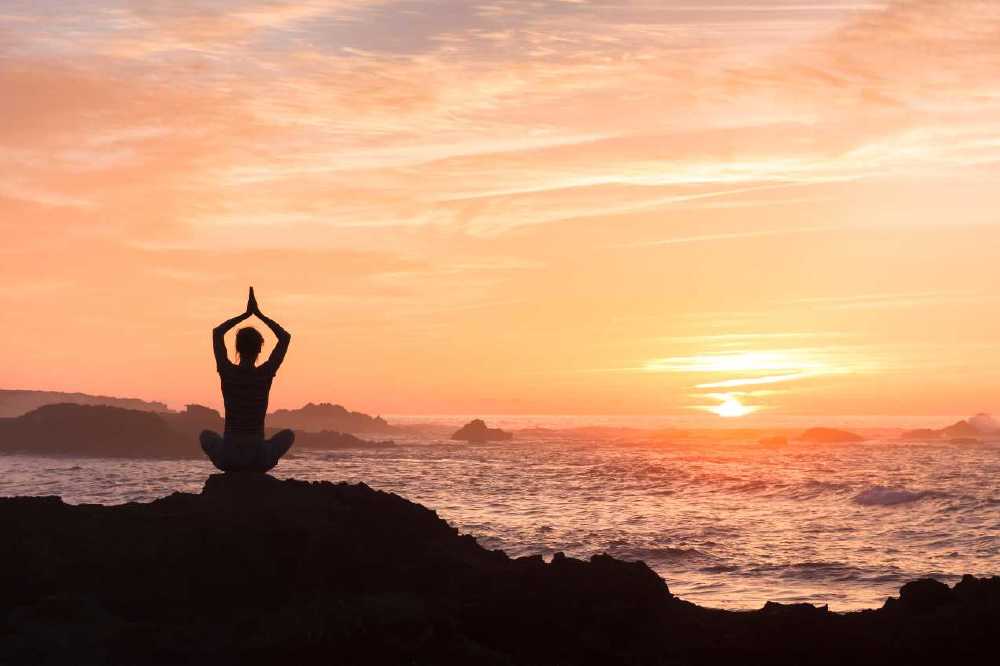By Sophie Crabtree
Like many, I had misconceptions about yoga that made me turn my nose up at my mother’s suggestion to join her in a yoga class for years.

NicoElNino / Alamy Stock Photo
As lockdown restrictions allowed public spaces to open again, I had a new sense of determination to find a physical exercise that I didn’t hate and got distracted from within a couple of weeks.
I already had a holistic approach to exercise, given that whenever I have a busy brain or feel sluggish, I kick myself out for a walk, but I needed something to move my entire body and give me the same relief.
Things I tried before falling for yoga
· Swimming – walking around barefoot where other people’s feet have been? No, thank you.
· Running – I thought it would be just like a walk, but even on an empty stomach, it found some substance to churn and make me feel sick
· Pilates – despite being the cousin of yoga, they’re pretty distant relations in that it was too intense around my core for my pelvic pain to handle
· Using a balance board – as someone with dyspraxia, I have poor balance… and no patience
· Skipping - trying to coordinate my entire body and sync up to jump over a rope is more likely to make me cry than lead to me breaking a sweat (you should’ve seen me in the sack race at primary school…)
The trend in these activities was that for as much as I may have persevered and seen physical effects, mentally, they were draining. I have anxiety which can often lead to low mood; I’m usually more about the endorphins I get from movement than any outward gains.
Unfortunately, society sells exercise to transform you into a particular, gendered shape – versus feeling proud that you moved your body with purpose and compassion. When, in fact, the only way most of us would achieve those figures would be to undertake surgical measures.
Challenging my misconceptions
When I finally joined my mum in my first Hatha and Yin yoga practise, my social anxiety was sky-high. New people, new place, and please, God, don’t let me be at the front where everyone can see me mess up the routine were fears I had.
Hats off to our teacher, she had created a safe, serene space, and there were still two spots at the back!
It’s for the Greek god-like among us
When I thought of the average yogic practitioner, I pictured a slender, elegant female leading other slender, elegant females and the odd Greek-god looking male.
I was pleasantly taken aback by the group's diversity of ages and physical abilities. The number of modifications that our yoga teacher advises for people to reach different levels of the same yogic poses means that it’s broadly accessible.
The teacher will critique my athleticism (or lack thereof)
As you find almost immediately, this practice is about extending compassion and self-acceptance, and your teacher follows suit.
They cast a caring, noticing eye over their students to ensure that they are not potentially doing more harm than good and make sure no one feels compelled to overextend themselves when a modification achieves the same results another way.
Humility is the session’s tone, and any cracks from joints or wobbles are welcomed with soft humour.
It’s a hippy-dippy affair
Music, chants, and meditations factor into the holistic approach to health here; it’s not all smoke and mirrors. I leave class feeling more grounded and connected to the earth than at any other point in a regular day (unless I’ve had the delight of standing by the sea or rambling up a hillside).
Yoga is unique in allowing yogis to notice, learn about, and care for their mind, spirit, and physical body.
Often, as part of the meditation at the beginning of a class, there is a body scan to check in from the tip of your little toes to the crown of your head and every muscle and joint in between; this routine is odd at first but with regular attention allows you to notice how your body changes and identify where something may feel off with more specificity.
Checking in with the spirit essentially quantifies how much energy you have. Likewise, with the mind, noticing but not judging thoughts that appear is a long-time learned.
With a clearer mind, the physical poses begin. The awareness you’ve created throughout your being raises the energy levels of each element – mind, spirit, and body – and with that, the physical exercise begins, allowing you to stretch and work muscles you may not even realise you have.
Choosing to commit
Yoga reinforces the need to carve out even a short space of time to move your body mindfully. Feeling less sluggish inside and more toned on the outside is a happy by-product of a more grateful view of the vessel that is my body.
That perspective shift is something I’m sure would benefit many people, and the accessibility of yoga makes it perfect.
It can be hard to commit to regular physical activity, especially if you’re busy juggling a career, partner, family, etc. Still, it’s worth pursuing the right yoga group for you if you wish to be more present in those segments of your life.
You can find out more about the many different variations of yoga and which one will best suit your needs HERE.
Tagged in Yoga

